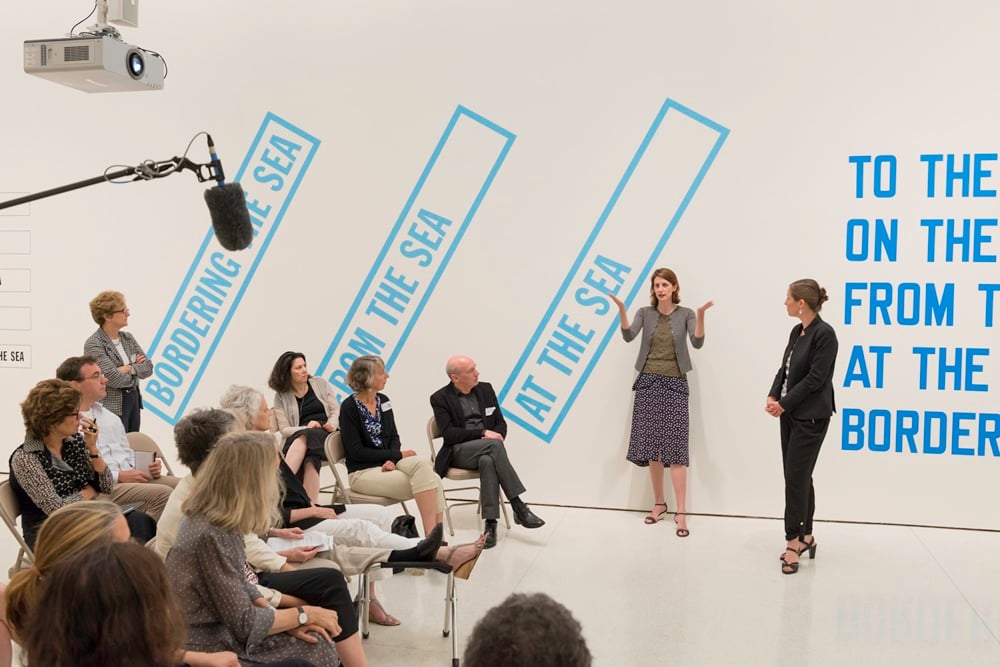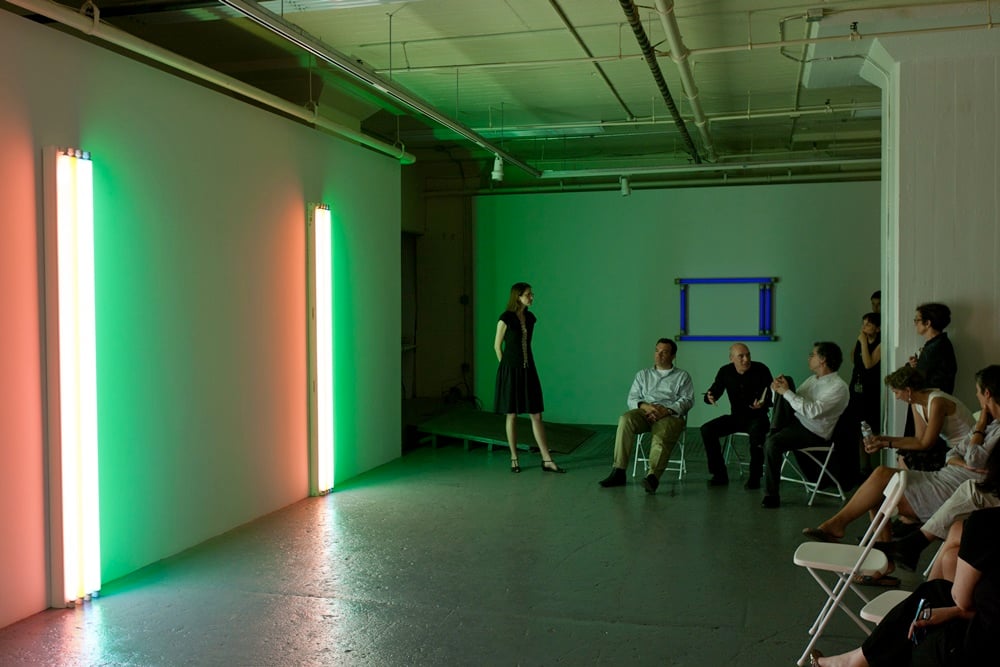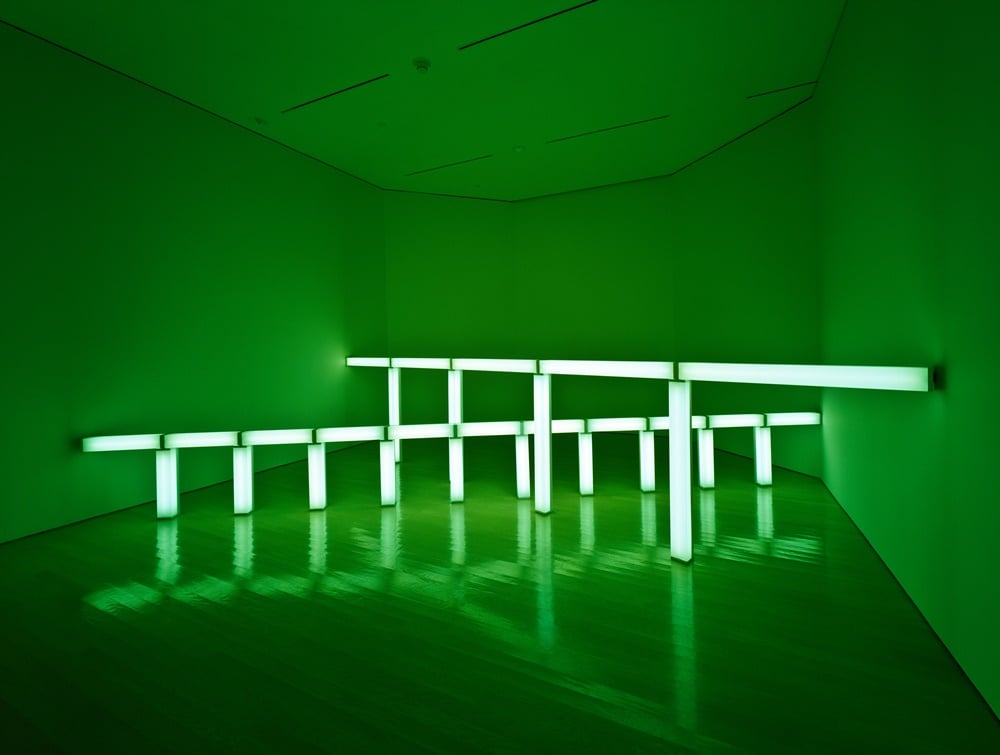Art World
The Guggenheim Gets $750,000 to Help Answer Knotty, Existential Questions About the Nature of Conceptual Art
The Mellon Foundation grant will fund the third stage of the museum's Panza Collection Initiative.

The Mellon Foundation grant will fund the third stage of the museum's Panza Collection Initiative.

Eileen Kinsella

After years spent carefully studying and researching a prized blue-chip collection of postwar art acquired from a private collector, the Solomon R. Guggenheim Museum is getting ready to share its findings with the rest of the world.
The museum has embarked on the third and final phase of a years-long collaboration with the Andrew W. Mellon Foundation that the New York Times has described as “one of the most ambitious conservation projects ever to address the deep uncertainties raised by Minimalism and Conceptualism.” The endeavor marks the first time the field has sought to reach consensus on how to display and preserve artwork that might otherwise exist only as a diagram or an idea.
Now, the Mellon Foundation is awarding the project a hefty grant of $750,000 (following the first two phases, which were funded by awards of $1.25 million and $1.23 million, respectively). The so-called Panza Collection Initiative has been quietly chugging along since 2010 and centers on the study of the most perplexing, fragile, and intellectually confounding works the museum purchased in the early ’90s from controversial Italian collector Count Giuseppe Panza di Biumo. (At the time, the Guggenheim made headlines for selling off works by Modigliani and Kandinsky to fund the purchase.)
As part of the initiative’s third phase, the museum will publish an archive of all its research and interviews online and convene a symposium next spring in partnership with the Los Angeles-based Getty Conservation Institute. The Guggenheim also plans to publish a book of its research and conservation findings in 2020.

Conservator Francesca Esmay (left) presents two different fabrications of Dan Flavin’s untitled (to Henri Matisse) (1964), which were installed for study during the Panza Collection Initiative Advisory Committee meeting, July 2011. Photo: Kristopher McKay © The Solomon R. Guggenheim Foundation
The overall project “was devised as a direct collaboration between the field of conservation and the field of art history and with a curatorial perspective,” conservator Francesca Esmay told artnet News. In addition to interviews with artists, the endeavor involved in-depth archival research, conversations with studio assistants and fabricators, and an ongoing exchange with an international advisory committee of conservators and historians.
Although the Panza Collection includes 350 works in all, the museum has narrowed its focus to the work of seven artists: Dan Flavin, Robert Irwin, Donald Judd, Robert Morris, Bruce Nauman, Lawrence Weiner, and Doug Wheeler. (That left researchers with around 140 works to consider in-depth.) Although Flavin and Judd are no longer alive, the project offered most of the artists a rare opportunity to communicate for posterity how they want their art to be presented and preserved.

Dan Flavin, greens crossing greens (to Piet Mondrian who lacked green) (1966).
Solomon R. Guggenheim Museum, New York, Panza Collection, 91.3705. © 2018 Stephen Flavin/Artists Rights Society (ARS), New York. Installation view: Dan Flavin, Guggenheim Museum SoHo, New York, September 13, 1995–January 28, 1996. Photo: David Heald © The Solomon R. Guggenheim Foundation
Esmay told artnet News that the Panza Collection Initiative team has more than 100 hours’ worth of artist interviews and dozens of hours of recorded video, as well as transcribed deliberation proceedings of the international advisory group. “There are also myriad archival documents such as artist correspondence, sales agreements, installation instructions, and records from art fabricators,” she said.
One of the most complicated conundrums the museum has faced is determining the fate of works by Donald Judd that the artist himself disavowed. In a famous, angry essay titled Una Stanza Per Panza, he argued that the collector Panza had created the boxes from plans without the artist’s approval and with sub-par materials.
“Ultimately, what transpired between Judd and Panza led the museum to declare several works unviable and they were reclassified as ‘Decommissioned,’ a new collection category that was established to address the complexities and historical significance of the works in question,” Esmay explained. “This new category is a way for the institution to responsibly retain the historic identity and scholarly value of the ‘work’ while safeguarding the ‘object’ from future misinterpretation or display.”
While it’s possible that representative “decommissioned” works could be shown to the public in the future, the circumstances for such a display “would be didactic and only for research and education,” Esmay said. The conservation team plans to present examples of these objects —by Judd and other artists—to symposium attendees in the spring of 2019, offering the opportunity for close analysis.
Esmay said the team is looking forward to sharing with the public the “very rich narratives around the complex and fascinating histories of the life of the artworks, from their inception and period of time under Panza’s ownership and of course their ensuing life at the Guggenheim where they have been preserved and displayed.” She added: “The project is quite special.”